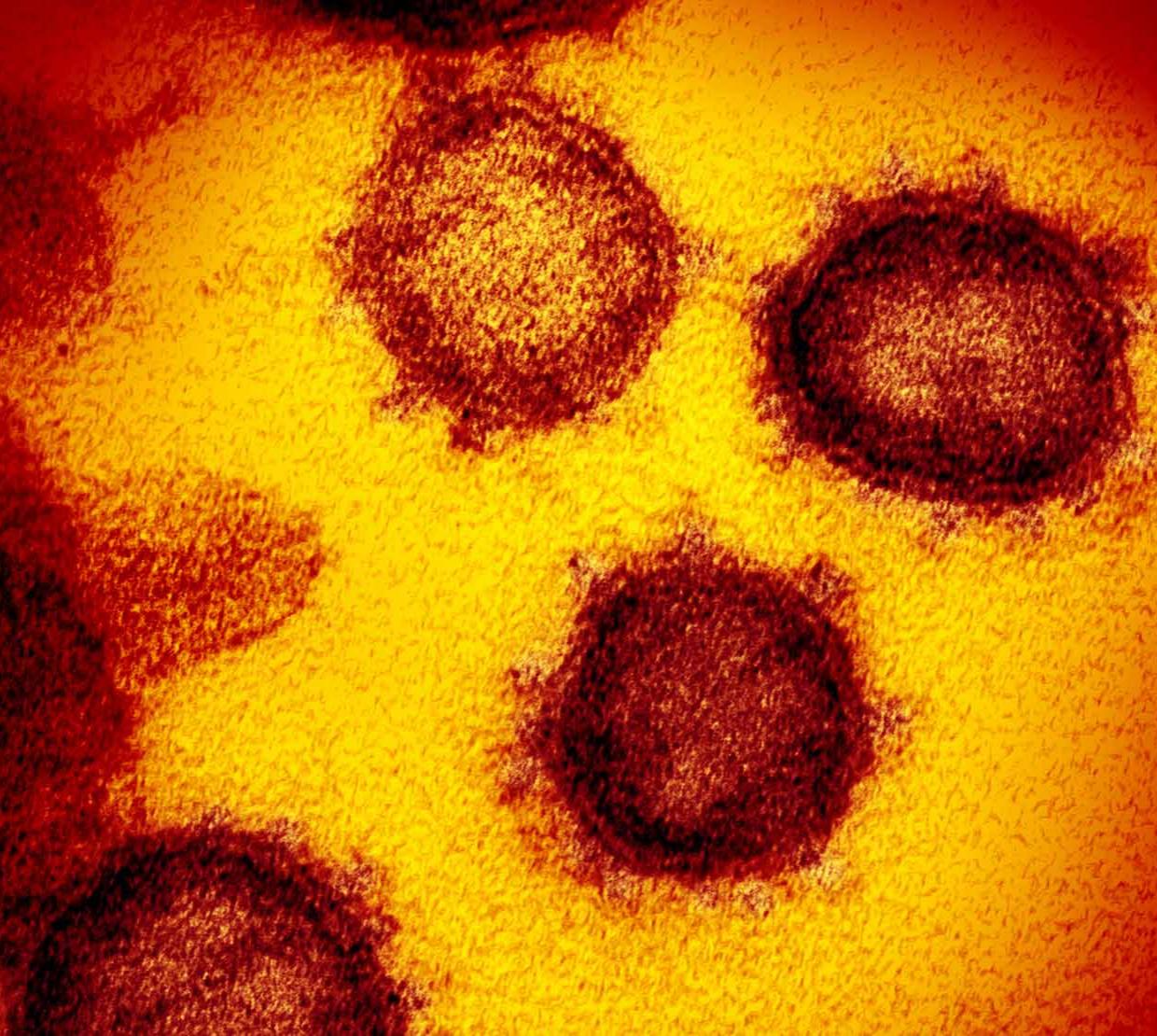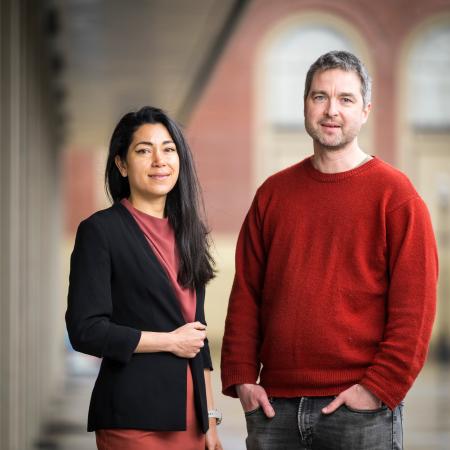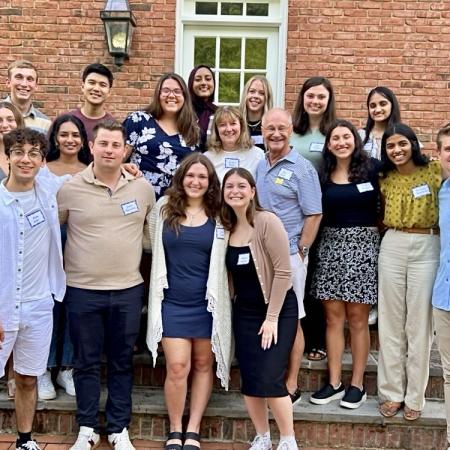The novel coronavirus that emerged in China is being called a pandemic in some quarters. The World Health Organization (WHO) defines pandemic as the worldwide spread of a new disease. Figures show that the virus has sickened more than 73,000 people in China and 29 other countries. Is it accurate to call the coronavirus infection a pandemic? What factors do you think have played a role in making the disease one of global proportions?
Dalziel: WHO has declared COVID-19, as coronavirus is now called, to be a public health emergency of international concern. The definition of pandemic is somewhat subjective in terms of what is meant by “worldwide spread,” but the pandemic word conjures up some of the worst public health emergencies in human history such as the 1918 flu outbreak. The goal here is to stop the infection from reaching that level.
The factors that drive spreading of COVID-19 are only partially understood. We can identify a range of possible factors that likely play a role. But identifying how those factors interact in particular cases is really difficult even for past epidemics and particularly for the new coronavirus because we are still in the early phases. In general, when a virus emerges in the human population that can spread efficiently from person to person there is still some chance that it won’t spread perhaps by random chance, or because the place where it emerges is not particularly well connected to other places. The coronavirus emerged in a place where there was sufficient travel to spread it domestically and internationally. There is a lot of uncertainty about the details of how interconnectivity drives spread but it certainly plays a big role.
Would the coronavirus infection look very different today if it had emerged in a remote place instead of a sprawling, well-connected urban center of 11.8 million people?
Dalziel: The Ebola outbreak (2014-2016) in West Africa emerged in a remote area (a small village in southeastern Guinea) and it took months to reach the capital city. So, when there isn’t that level of connectivity, it can slow down spread, or stop it completely. COVID-19 has been able to overcome that initial barrier and start spreading widely.
The SARS (Severe Acute Respiratory Syndrome) epidemic, which in some senses is a similar virus, resulted in mathematical models and insights about the role of the air travel network in the spread of respiratory viruses.
The death toll from the coronavirus is now 1,869 and surpasses that of the SARS epidemic, which only infected about 8,100 and killed less than 800 people throughout eight months in 2002 and 2003. Does this make the coronavirus a more dangerous outbreak than the common flu and other recent epidemics such as SARS? How do we understand coronavirus death rates vis-à-vis other major disease outbreaks?
Dalziel: The New York Times had a great graphic that summarizes this issue. There are probably two fundamental factors when we are thinking about the danger or risk posed by an outbreak and how to quantify that. The first is the basic reproductive number of the epidemic, R0 (R naught), which indicates number of secondary infections caused by the first case in a susceptible population. The higher the R0, the faster the disease spreads. For instance, the R0 for measles in an unvaccinated population is more than 10. That is high – it is saying that initially every index case generates approximately 10 secondary cases. R0 for seasonal flu is about 1.3, which is also high enough to cause large epidemics.
The second key factor is the case fatality rate (CFR) — the fraction of cases who die from the infection. And these two factors together determine the level of danger of an outbreak. A high R0 would mean that the disease is spreading very fast, while a high case fatality rate means the epidemic is very deadly.
This NYT graphic plots estimates of the R0 and CFR for coronavirus against different infectious diseases. While the absolute number of deaths from coronavirus are higher than SARS, the fatality rate of the coronavirus is currently estimated less than SARS (SARS had a fatality rate of 9.6% compared to coronavirus fatality rate of 2.1% but that may change according to MarketWatch). The graphic shows that the coronavirus is spreading a little faster than the seasonal flu and is certainly more deadly than the common cold but seems to be a little less deadly than SARS and a lot less fatal than Ebola.
The graphic also indicates uncertainty and the jury is still out on exact numbers for the outbreak. I think an important question is about how much onward transmission there will be in the Canada and the U.S. – if it is going to eventually look like SARS, where there is a period of widespread transmission within North American cities – or if cases that are imported here will continue to be contained. The WHO designation gets it exactly right – it should be taken seriously but there is also hope that with the right action outbreak rates can be contained.
Twenty nine cases of the coronavirus infection have been confirmed in the United States so far. Apart from quarantine and airport screening, are there other effective ways to control the local transmission of the coronavirus in American cities?
Dalziel: Contact tracing is a very important and effective tool. Contact tracing means finding out, when there is a case, who had potentially infectious contact with that patient, gather more information from these contacts and offer assistance. That’s the way you can get one step ahead of the spread and limit it. The issue with contact tracing is it is very resource intensive because for every case you need to follow up with each of the potentially infected contacts.
For example, when one has 100 or 1000 cases it becomes much more difficult to do contact tracing and that is when we see a greater spread. A key metric for me is when an infectious disease is exceeding our ability to perform these effective control responses. That’s a different and scarier ballgame.
As a new epidemic, the coronavirus has attracted widespread attention on news media but this has also given rise to misinformation and conspiracy theories. Do you think with the explosion of news on the infection it has been a little difficult to separate facts from myths? Are there some critical key facts about the coronavirus outbreak that are getting lost in the noise?
Dalziel: I have appreciated a lot of the coverage on the coronavirus. If there is something that is getting distorted, it might have to do with the way that human beings, including myself, struggle with thinking about risk properly. We could be doing a better job of putting the risk in context. At present you are thousands of times more likely to get sick with the seasonal flu than with COVID-19 in the U.S. It is very difficult for the people involved and we should save some bandwidth for compassion for those affected by the virus.
In your research, you have modeled outbreak trends for seasonal flu and the Ebola epidemic. Are there any big research questions at the heart of this outbreak that you would be interested in tackling in the near future?
Dalziel: There are a number of very good research groups working on the coronavirus already. Certainly there is no shortage of expertise. One of the questions that a graduate student in my lab and I have been interested in is investigating the role of heterogeneity in spread. The term heterogeneity indicates that the disease spreads at different rates in different places, which is certainly the case with COVID-19. For example, the infection is spreading relatively rapidly in China and not as much in the U.S. If you calculate that reproductive number in different places, one gets very different answers. One of the things we want to know is if this is going to be the next SARS in terms of taking hold and spreading in North American cities. That is difficult to predict just based on a single R0 value calculated over the whole world.
We are interested in understanding the consequences of different spread rates in different places and if we can introduce other parameters besides R0 that will help us asses when a pathogen arrives in a city and whether it’s likely to take hold there. The latter is manifestly not determined by a single R0 value because that implies an exponential growth of the infection all over the world, as long as R0 is bigger than 1. What we currently have with COVID-19 is a high rate of spread in some places and a lower spread in others. We are interested in understanding how we can get more predictability in such types of situations.
Learn more about and track the rapidly evolving situation with the coronavirus disease.





